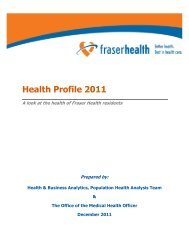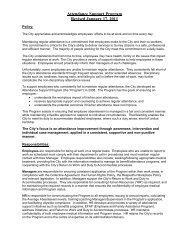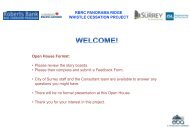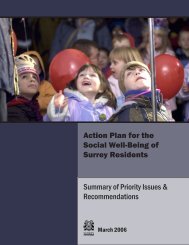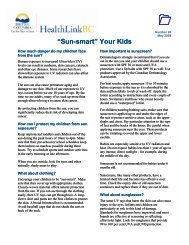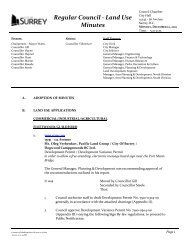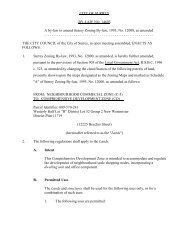Blackie Spit Park: Wildlife Habitat Enhancement Plan - City of Surrey
Blackie Spit Park: Wildlife Habitat Enhancement Plan - City of Surrey
Blackie Spit Park: Wildlife Habitat Enhancement Plan - City of Surrey
You also want an ePaper? Increase the reach of your titles
YUMPU automatically turns print PDFs into web optimized ePapers that Google loves.
2.0 Goals and Objectives<br />
Species Management Goal<br />
• Diversity <strong>of</strong> species associated with mixed deciduous-coniferous forest: terrestrial amphibians;<br />
raptors, woodpeckers, flycatchers, wrens, thrushes, vireos, warblers, grosbeaks, sparrows; small<br />
mammals; raccoons.<br />
<strong>Habitat</strong> Management Objectives<br />
• Maintain existing deciduous forest development and plant additional trees along west side and<br />
in area south <strong>of</strong> current grove;<br />
• <strong>Plan</strong>t small number <strong>of</strong> coniferous trees (10) for winter and nesting cover;<br />
• Do amphibian inventory/habitat quality study to determine whether terrestrial salamanders or<br />
other species are present in forest or whether introductions are appropriate;<br />
• Manage forest for amphibian habitat features (e.g. coarse woody debris), if required;<br />
• Control invasive species (e.g., blackberry, broom, tansy) in peripheral areas between forest edge<br />
and grasslands <strong>of</strong> MUs 9, 10, and 11, at the south end, and in the northwest where wetland and<br />
meadow are to be maintained (next bullet);<br />
• Maintain cattail wetland and open meadow in vicinity <strong>of</strong> wetland through removal <strong>of</strong> all woody<br />
vegetation.<br />
• Decommission all un<strong>of</strong>ficial trails;<br />
• Construct one main trail through the site.<br />
3.0 Management Prescriptions<br />
3.1 Initial <strong>Enhancement</strong> Requirements<br />
• Remove blackberry and broom in all habitat units northwest and south <strong>of</strong> the deciduous woodlot<br />
(except for the blackberry area labelled “A.”)<br />
• In areas “B” and “C”<br />
• Remove blackberry and broom by cutting and shallow rototilling.<br />
• If necessary, mow/cut areas twice annually for two years to retard the growth <strong>of</strong><br />
blackberries and other species.<br />
• Between years, plant a winter crop such as fall rye or winter wheat to provide nutrients,<br />
and compete with the invasive species.<br />
• In the spring <strong>of</strong> the third year,<br />
• Rototill the cover crop into the soil (5-8 cm deep), if possible while it is still < 30 cm<br />
tall.<br />
• seed with a pasture mix <strong>of</strong> low-growing grasses and clover such as a modified version<br />
<strong>of</strong> the DF&WT’s set-aside mix, or other mix suited to the local conditions.<br />
• In the fall, plant native shrubs and small trees as follows.<br />
• <strong>Plan</strong>t the following shrubs:<br />
“Lawn” (1800m 2 ) B (1000m 2 ) C (1150m 2 )<br />
Black hawthorne 5% 23 13 14<br />
Cascara 5% 22 12 14<br />
Red-osier dogwood (Cornus stolonifera) 20% 90 50 58<br />
<strong>Blackie</strong> <strong>Spit</strong> <strong>Park</strong>: <strong>Wildlife</strong> <strong>Habitat</strong> <strong>Enhancement</strong> <strong>Plan</strong> – Management Unit 8 46



